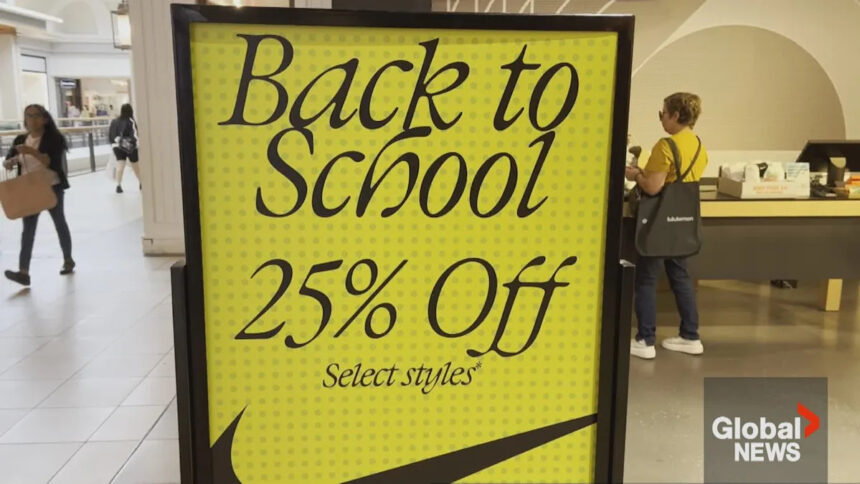The familiar September ritual of back-to-school shopping has transformed into a source of significant financial strain for Canadian families. As children across the nation return to classrooms this fall, parents are confronting escalating costs that extend far beyond traditional supplies like pencils and notebooks, creating unprecedented pressure on household budgets already stretched thin by persistent inflation.
A recent Leger survey commissioned by the Chartered Professional Accountants of Canada reveals a troubling financial landscape: nearly 40% of Canadian parents report experiencing “moderate to significant” financial stress due to back-to-school expenses this year. The study highlights that families are allocating an average of $680 per child for these essential preparations—a figure that rises dramatically for post-secondary students.
“We’re seeing parents make increasingly difficult choices about what constitutes a necessary expense versus what can be eliminated,” explains Doretta Thompson, financial literacy leader at CPA Canada. “Many families are reporting they simply cannot meet all the expected costs without compromising other essential household needs.”
The financial burden extends well beyond traditional school supplies. Parents now face substantial costs for technology requirements, extracurricular activities, clothing, transportation, and specialized equipment. For high school students, the average expenditure reaches approximately $970, while post-secondary expenses soar to an average of $9,300 per student when accounting for tuition, textbooks, and potential housing costs.
The CO24 Business department’s analysis of market trends confirms these findings, noting that prices for electronic devices commonly required for schoolwork have increased by 12-18% since 2022, while specialized athletic equipment costs have risen by nearly 15%.
Parents across Canada are adopting various coping strategies to manage these expenses. The survey indicates 68% are actively searching for sales and discounts, 52% are reusing supplies from previous years, and 41% are purchasing only the absolute essentials. More concerning, approximately 22% report taking on additional debt specifically to cover back-to-school costs.
“I’ve never had to budget so carefully for something as basic as sending my kids to school,” says Michelle Karras, a mother of three from Edmonton. “We’re making trade-offs everywhere—delaying other purchases, cutting back on activities, even reconsidering our holiday plans.”
Financial experts from major Canadian institutions point to the compounding effect of several economic factors. “We’re witnessing the collision of persistent inflation in consumer goods, stagnant wage growth for many Canadian workers, and increasing educational requirements that often include technological components,” notes Dr. Elise Montclair, economist at the University of Toronto. “The result is that what was once a manageable annual expense has become a significant financial hurdle for many families.”
The situation appears particularly challenging in urban centers like Toronto and Vancouver, where the survey indicates average per-child expenditures exceed the national average by approximately 15-20%. Rural families face different challenges, often contending with transportation costs and fewer options for discount shopping.
Educational equity concerns are emerging as financial barriers potentially impact educational outcomes. Schools and community organizations across the country report increased demand for supply assistance programs, with many reporting they cannot fully meet the growing need.
As families navigate these financial challenges, financial advisors recommend several approaches: starting to save for school expenses months in advance, establishing clear budgets, prioritizing needs over wants, exploring second-hand options, and investigating community support programs.
The phenomenon raises important questions about educational accessibility in Canada. As the cost of education continues to rise from elementary through post-secondary levels, how will Canadian society ensure that financial barriers don’t create a two-tiered educational system? The answer may require coordinated responses from educational institutions, government policy makers, and communities committed to educational equity.










